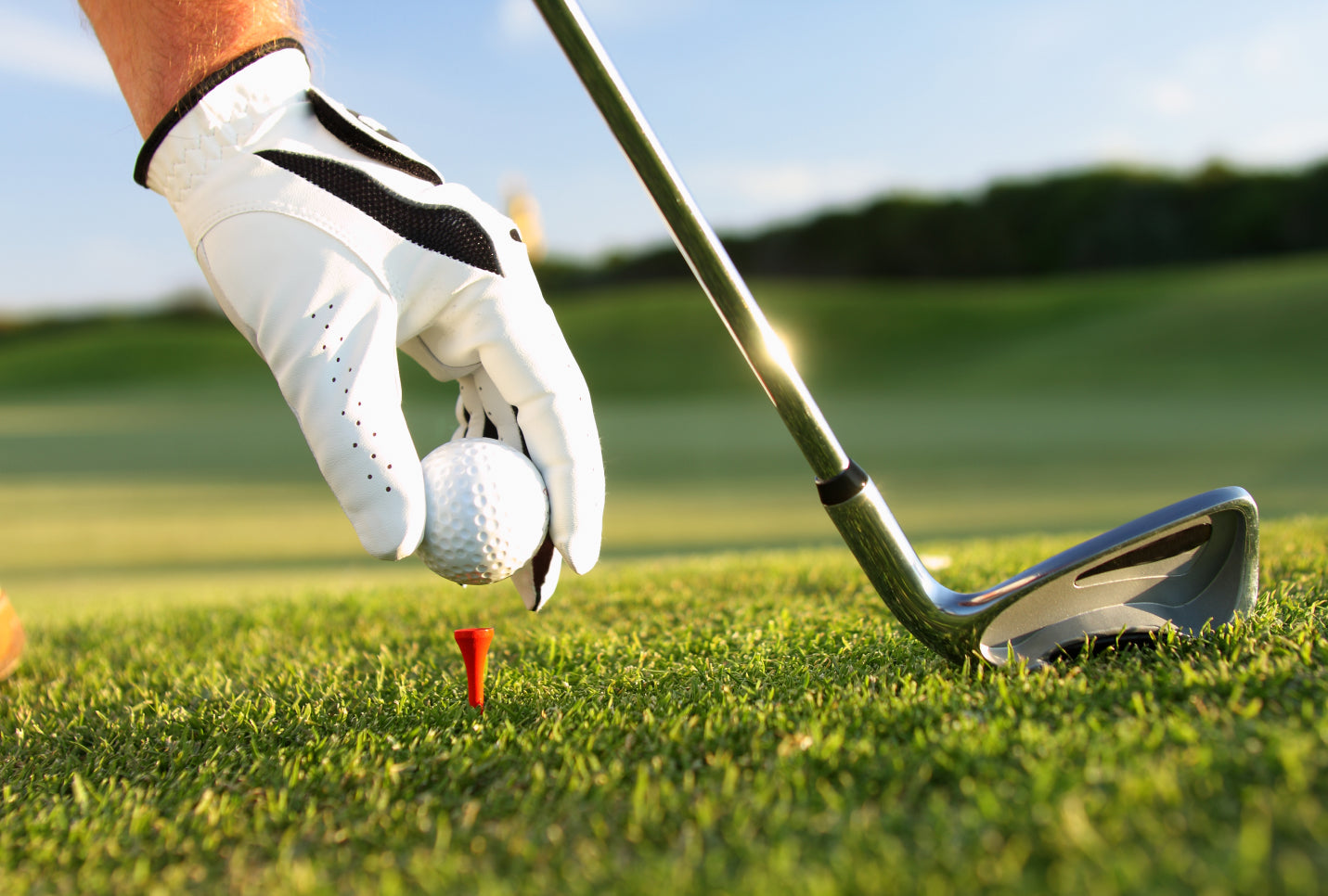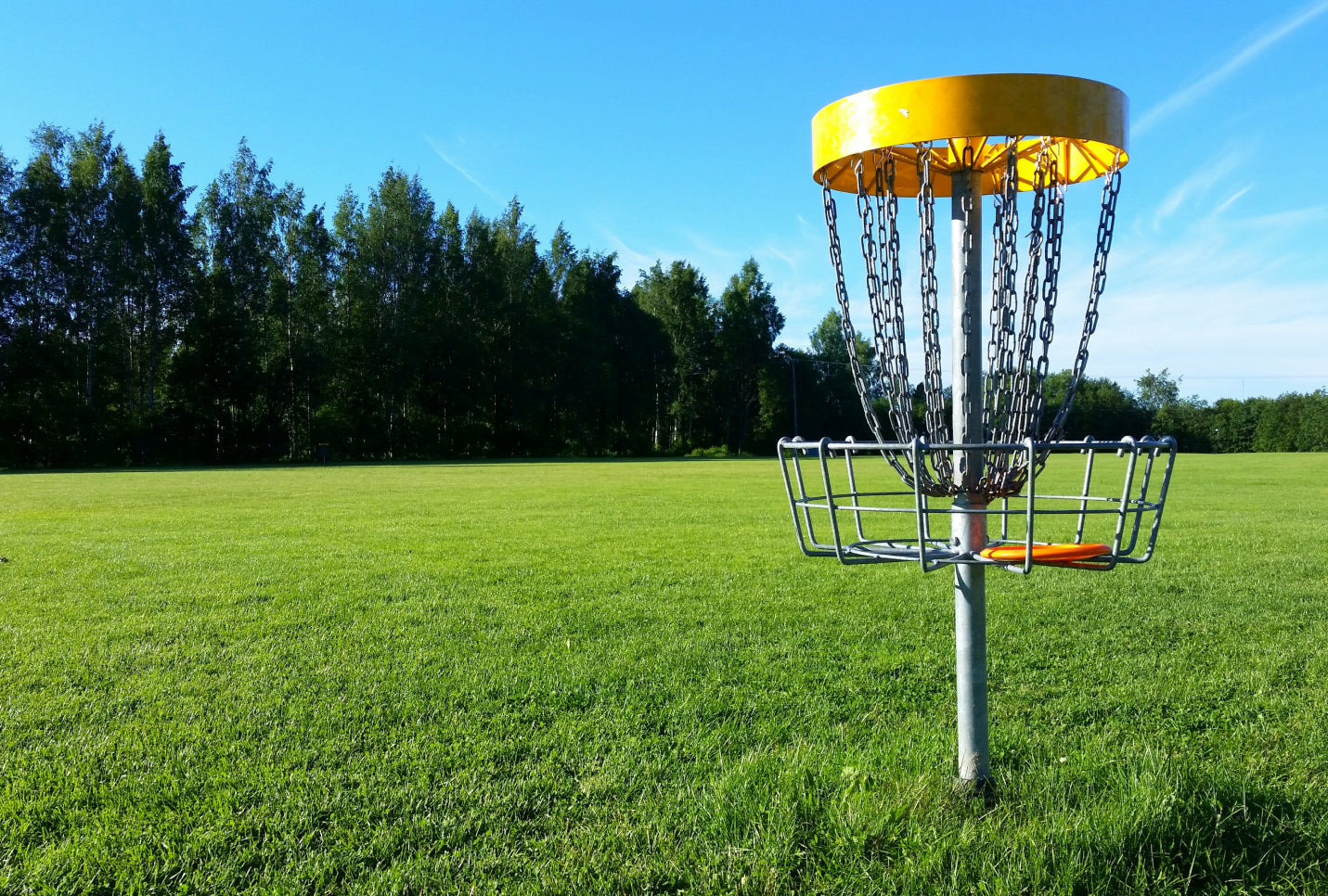Disc golf is an exhilarating outdoor sport that merges the strategic planning of traditional golf with the active, dynamic movement of a frisbee throw. Disc golf offers a fresh spin and accessible entry into the world of sports and outdoor activity and proves you don't need a club to have a good time.
Perfect for all fitness levels and ages, it’s no wonder that disc golf is growing in popularity faster than a disc on a fairway drive.
So, as we approach National Disc Golf Day on August 5th, there's no better time to delve into this exciting sport. Not sure where to start? We’re here to help drive home the ten essential disc golf rules you don't want to forget.
10 Disc Golf Rules To Remember
Disc golf is a captivating sport with a clear goal: land your disc in each hole using the fewest possible throws, just like traditional golf.
But, instead of a traditional golf course, you have a series of chain baskets serving as holes and your disc substitutes for a golf ball. The thrill of scoring an “ace” – a hole-in-one – is simply unbeatable!
As we delve into the fundamentals of the game, let's break down the ten essential disc golf rules that will set you up for a successful, enjoyable, and ace-worthy performance.
Rule 1: Teeing Off
Starting a game of disc golf begins with teeing off. For this, the player must position at least one foot on the tee pad, while the other can either be behind the line or mid-air.
Crucially, stepping past the tee line before launching the disc is not allowed. This rule levels the playing field, preventing any player from gaining an undue advantage. A well-executed tee shot serves as a launchpad for success on the fairway.
Rule 2: Order of Play
After the tee-off, the player whose disc is furthest from the hole goes first. Commonly referred to as "furthest away plays first," this rule remains in effect throughout the round until the completion of the hole.
Maintaining this order keeps the game moving along efficiently while adding a tactical component to your disc golf play.
Rule 3: Fairway Throws
Fairway throws, or the throws made post-tee-off toward the hole, are governed by their own rule. Players make their throw from the exact spot their previous throw landed, placing one foot as close as possible to this spot.
As with teeing off, stepping beyond the disc before it's thrown can result in a penalty. Mastering your fairway throws can be game-changing, allowing more efficient navigation of the course.
Rule 4: Completion of Hole
Completing a hole is as crucial as its commencement. In disc golf, a hole is deemed complete when the disc successfully lands and rests in the basket or chains, a term referred to as “holing out.”
Control and precision in your throws are emphasized, skills that, although they may require time to develop, yield great rewards.
Rule 5: Out-of-Bounds
Every disc golf course features designated out-of-bounds (OB) areas. If a disc lands in an OB, a one-stroke penalty is imposed, and the next throw must be taken as close as possible to where the disc crossed into the OB.
While specific rules can vary among courses, understanding and respecting OB areas adds an additional layer of strategy to the game, urging players to plan carefully and assess risks.
Rule 6: Lost Disc
Losing a disc in a disc golf game can impact your performance. Officially, a disc is deemed lost if not found within three minutes of search initiation. This results in a one-stroke penalty, and the next throw occurs from the last position.
Maintaining a watchful eye on your disc's trajectory is key to a good score. Controlled throws and avoiding risky moves when disc loss risk is high can prevent this situation.
Rule 7: Interference
Interference in disc golf demands sportsmanship. If your disc in flight is intentionally deflected or stopped, your next throw is from the interference spot.
This rule calls for clear fields and attentiveness to others' play. If an outside force alters your disc's course, like wind or a roaming dog, the next throw is from the new location.
Rule 8: Courtesy
Another rule that underscores the sportsmanlike nature of disc golf is the courtesy rule. This rule stipulates that players should not distract others when making their throws, should avoid damaging the course, and should respect the rights of other players and park users.
Players who consistently break the courtesy rule can be penalized, emphasizing how important respect for fellow players and the environment is in disc golf and enhancing the overall enjoyment and fair-play spirit of the game.
Rule 9: Scoring
Scoring in disc golf is straightforward: each throw is one point, and the aim is the lowest possible score. Penalties, such as for a lost or out-of-bounds disc, add to your score.
This simple scoring system promotes competition and skill refinement. Accurate scoring allows tracking of progress and identifying areas for improvement.
Rule 10: The Role of Practice
While not an official rule, practice is an unspoken requirement if you want to excel in disc golf. Regular practice helps you to better understand your discs, improve your throw techniques, and master the rules of the game.
Remember, it's not just about the quantity of your practice sessions but the quality. Focus on different throwing techniques, learn how to read the course, and perhaps most importantly, learn from your mistakes.
Disc golf is a sport of constant learning and development — the more you invest in honing your skills, the more rewarding the game becomes.
Ace Your Game With a Balance of Disc Golf Mastery and Body Support
Mastering disc golf rules is the first step to scoring those aces. However, nailing those perfect throws also demands attention to bodily support.
Repeated disc golf actions may lead to wrist tension and discomfort over time. Luckily, Incrediwear's Fingerless Circulation Gloves are well-equipped to enter the playfield.
With advanced semiconductor-embedded fabric, these gloves are designed to support healthy blood flow — crucial for carrying oxygen and nutrients to your hands and wrists — which can aid in soothing tension and supporting normal flexibility and mobility.
When worn during or after your practice sessions and games, these gloves can be a useful tool for recovery, helping you stay in the game and keep improving without discomfort holding you back.
Don't forget that achieving a balance between practice and rest is key. As you gear up for August's Disc Golf Day, find joy in stepping onto the course, armed with the knowledge and tools needed to play, improve, and bounce back.
Your disc golf game is more than just the rules; it's an ace blend of strategy, skill, and self-care.
Sources:
A Guide to Disc Golf from the PDGA| Professional Disc Golf Association
How does the blood circulatory system work? | NCBI Bookshelf
A Post-Workout Recovery Plan for Healthy Muscle Growth | Cleveland Clinic
Read more

August brings a sense of anticipation and excitement for golf enthusiasts across the United States — much like the quiet before a perfectly executed swing — as it marks the annual observance of Nat...

September carries in not just crisper air and the early transformation of the leaves but also the rhythm of National Dance Month. And, as we pirouette into the world of dance, focusing our spotligh...






Leave a comment
All comments are moderated before being published.
This site is protected by hCaptcha and the hCaptcha Privacy Policy and Terms of Service apply.